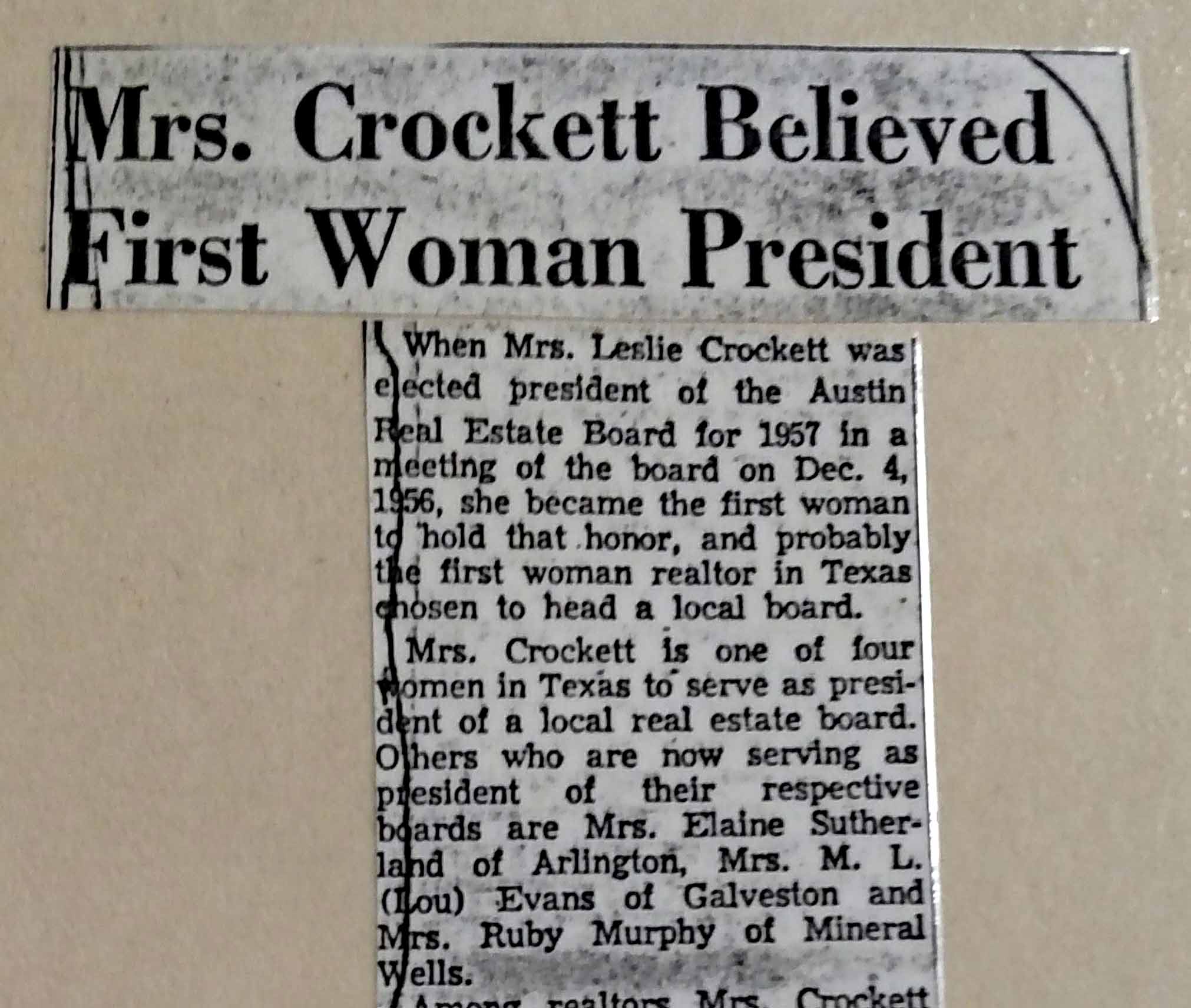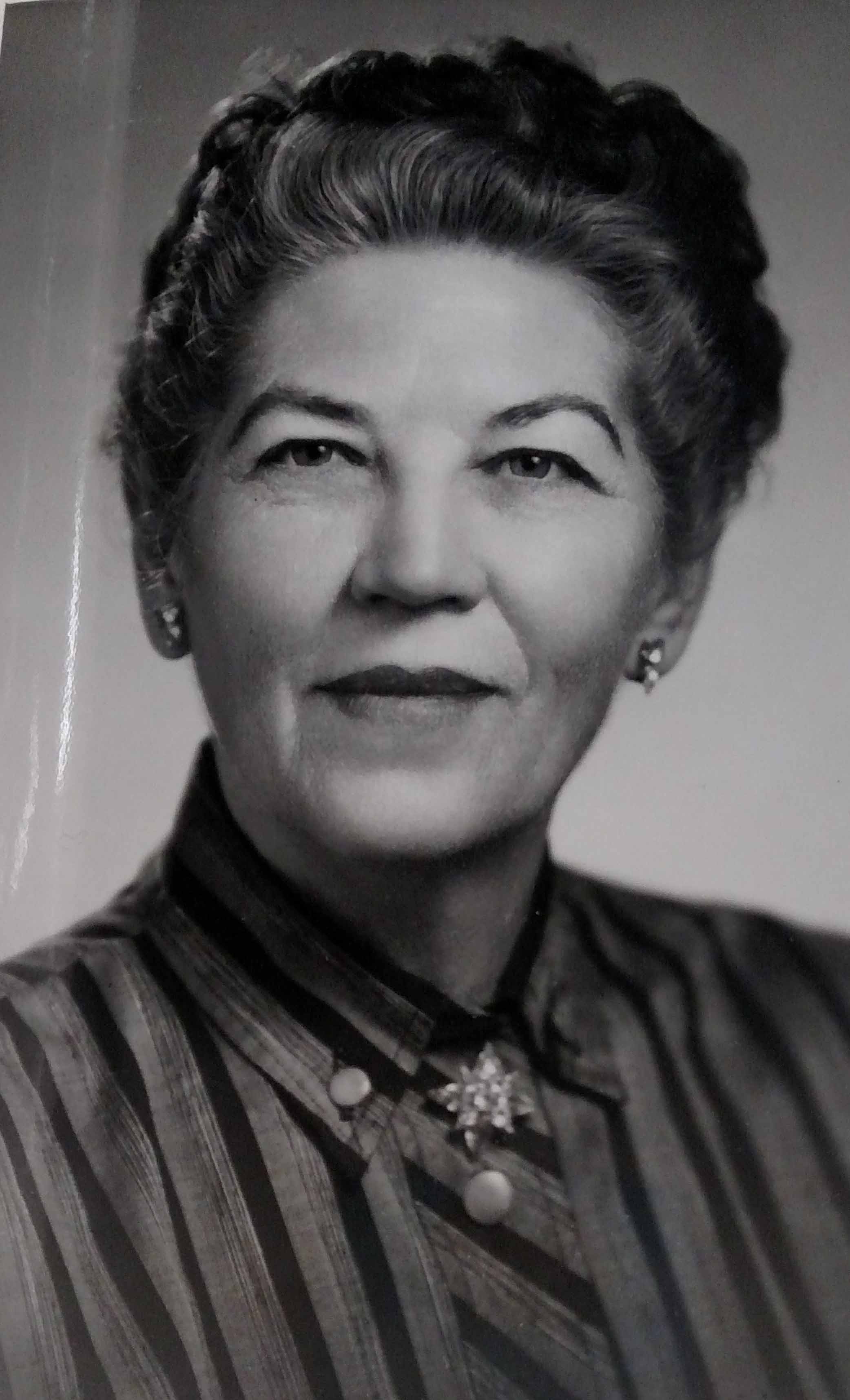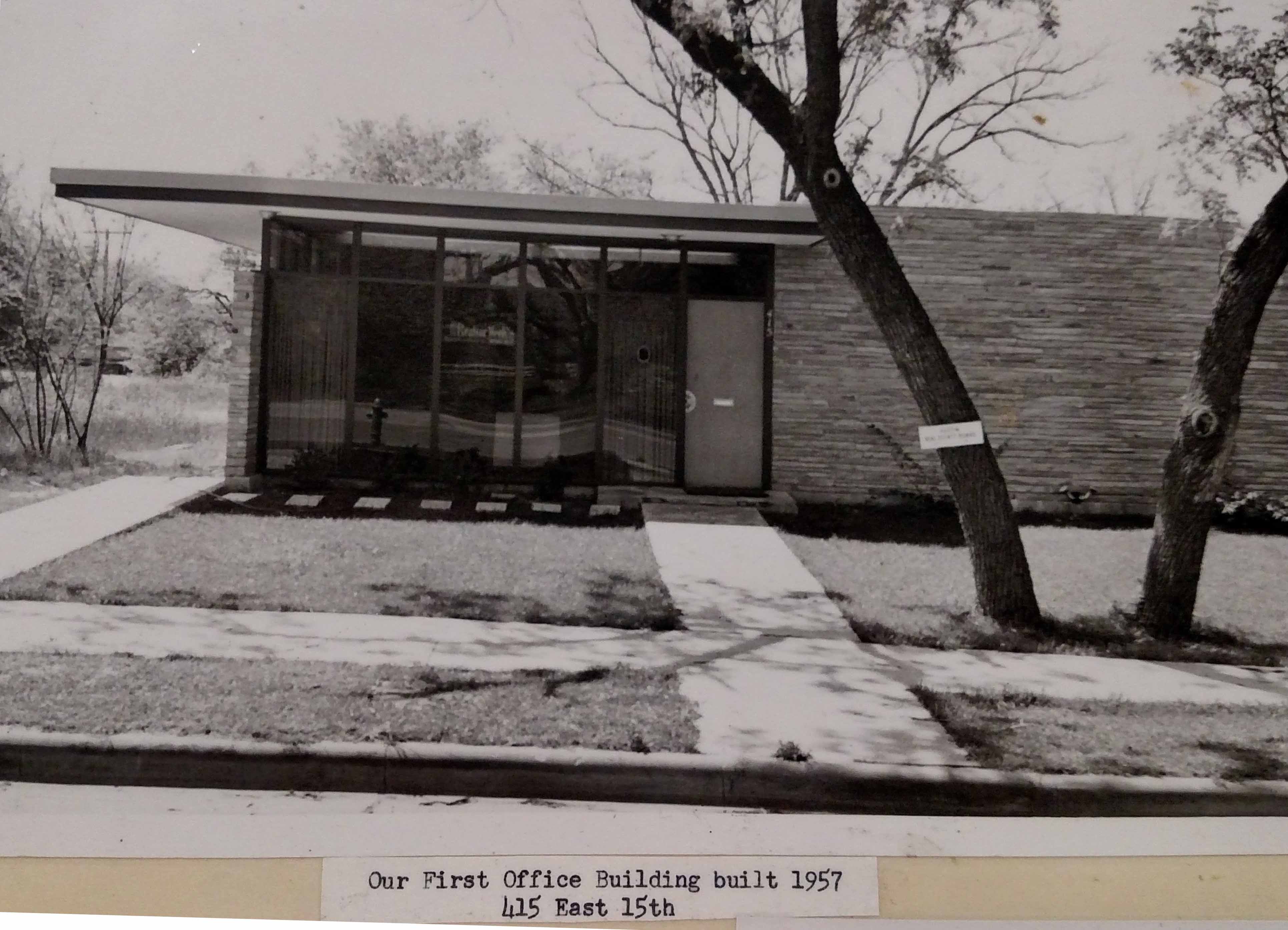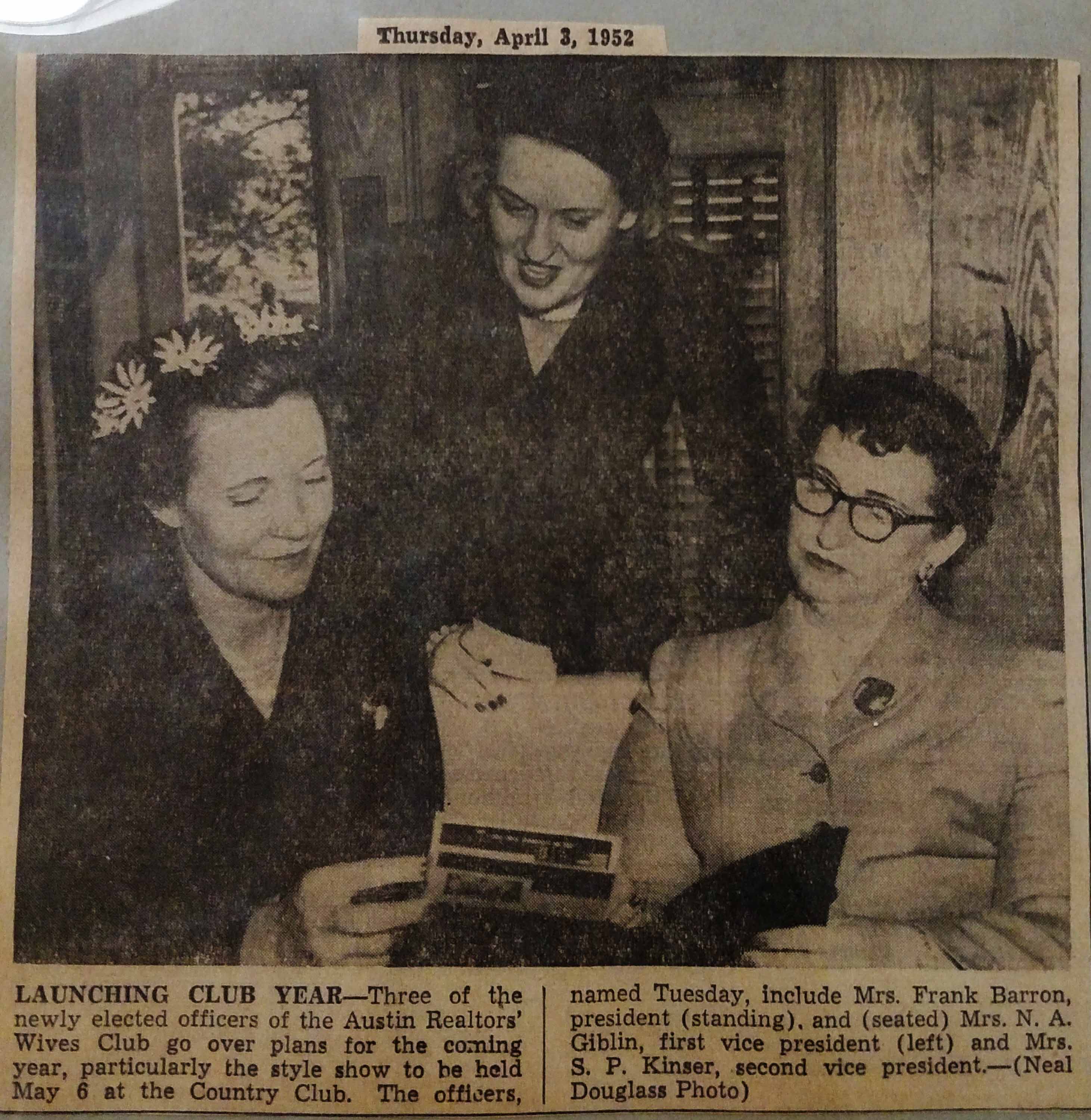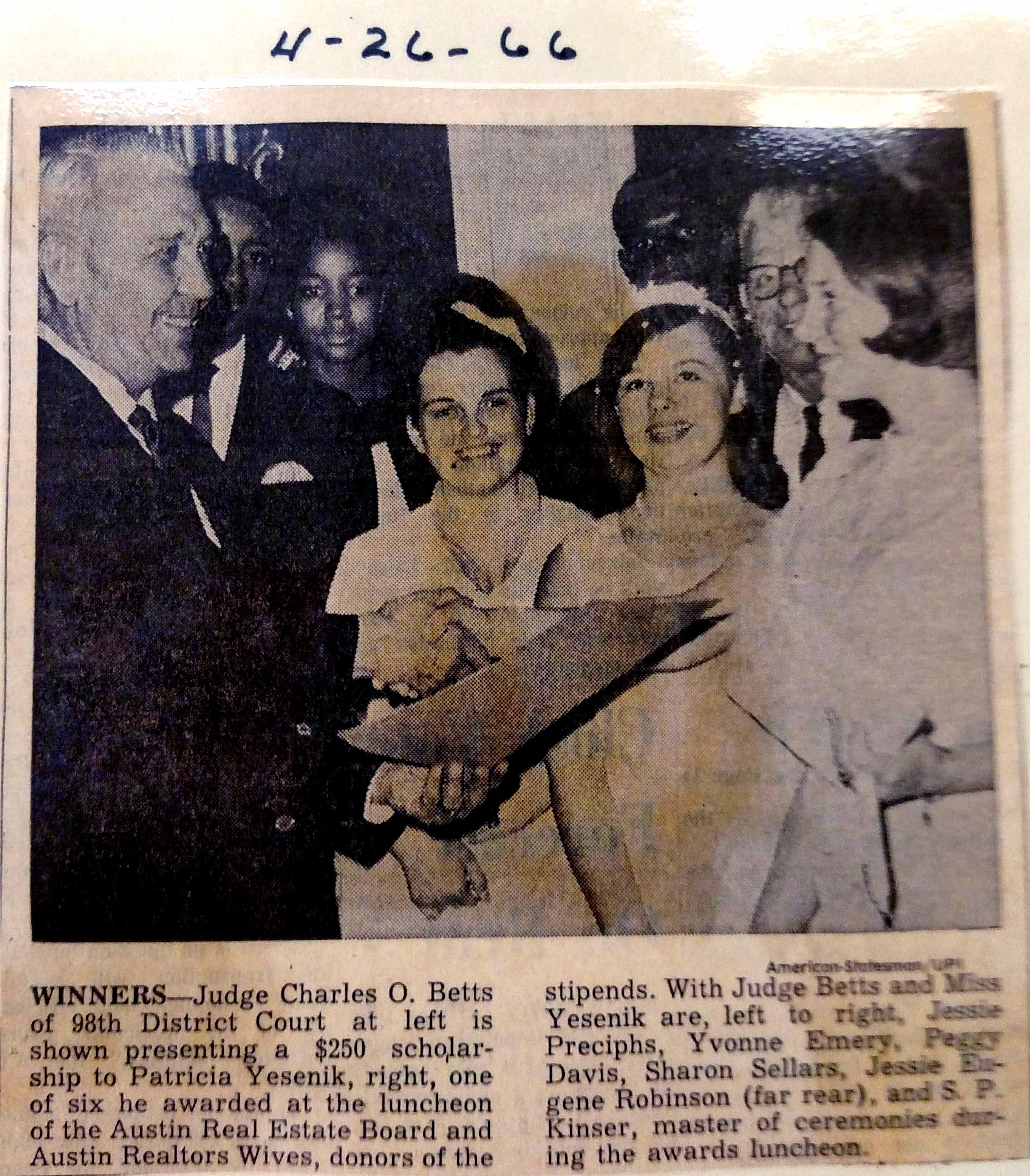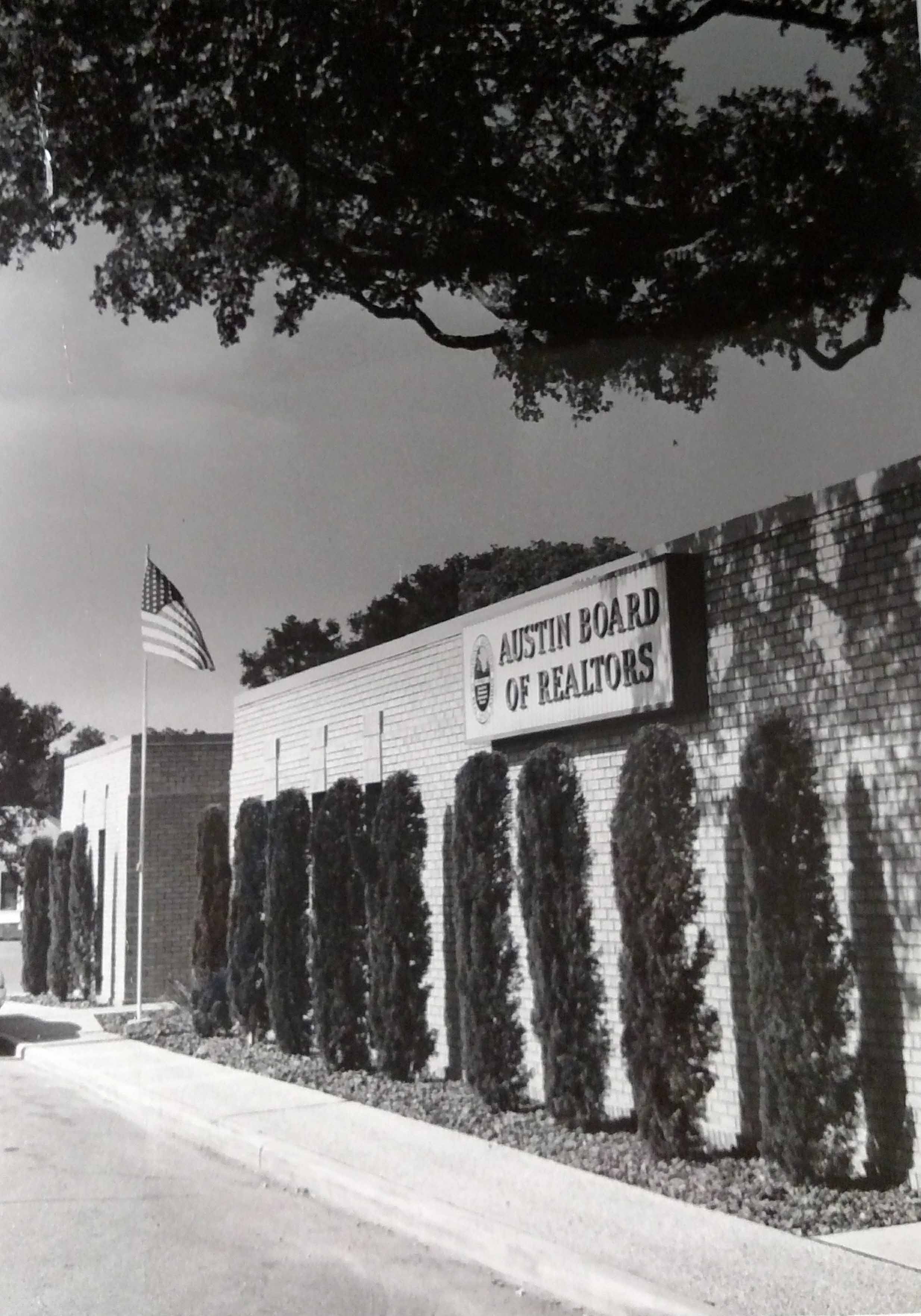Our History

We’ve been around for a while. ABoR has provided Central Texas REALTORS® with the tools they need to succeed since 1926. In nearly a century serving the Live Music and Breakfast Taco Capital of the World, ABoR has cemented its place as an Austin institution and vocal proponent of the policies and business practices that have made Austin such a great city. Here's a snapshot of our vibrant history.
1941
The Austin Board of REALTORS® is founded as the Austin Real Estate Board in 1941 as a local chapter of the National Association of Real Estate Boards. The founders are 13 local businessmen who are well-known throughout Austin as trailblazers and champions of civic causes. The 13 founders become the first Board of Directors for our Association.
In its early years, membership of the Austin Real Estate Board is fairly exclusive. Membership is limited to men and requires a formal application process that includes an interview, sponsorship by a current member, and approval by the current Board and membership.
1949
The Austin Real Estate Board is incorporated on February 11, 1949. Founding charter members are Tom Graham, George W. Sandlin, N.A. Giblin, Bob Gorham, Chester Buratti, Joe C. Franzetti, Harold Legge, James C. Cochren, W.M Graham and C.D. Wilson.
The Texas Real Estate Commission (TREC) is founded and begins handling all real estate license applications. Austin REALTOR® George Sandlin is appointed as the first TREC commissioner and serves from 1949 to 1955.
The inaugural Most Worthy Citizen Award is bestowed to Austin Mayor Tom Miller in 1949. A dedicated public servant and two-time mayor, Miller is responsible for the development of many of Austin’s municipal facilities and services.
Fun Fact! The 13 founders of the Austin Real Estate Board were known around town as the “Rat Pack”.
During the 1940s and early 1950s, the Austin Real Estate Board meets weekly to discuss local and state legislative issues, compare business strategies, and cultivate good fellowship. There is no paid executive at this time. The board creates bylaws, establishes standing committees, and hires a secretary to handle daily tasks. She is the only woman allowed to attend meetings.
The Austin Real Estate Board takes several steps that lay the foundation of the organization we see today. Some of the Board’s first initiatives include weekly property exchanges, member education, civic engagement, and political involvement.
1950
The Austin population is 132,459, ranking 73rd in the nation.
The Austin Real Estate Board purchases a printing press and begins printing a weekly newsletter, “Dope & Dirt”. The publication includes available properties, sold properties, local agent statistics, Board and education news, and funny editorial content.
1951
The Austin Board of REALTORS® Foundation is formally established.
1952
ABoR becomes one of the first real estate associations in the country to create its own Multiple Listing Service (MLS). A small, but loyal group of members contribute a total of $2,500 to set up the Austin Real Estate Board MLS in January 1952.
The MLS membership, which is directed by a committee of six members, meets weekly to exchange information. Listings are compiled each Monday and Thursday and distributed to 93 MLS members. Typically, 15 to 20 listings are sent at a time.
When a property sold, a five percent commission was typically paid by the property seller to the MLS. The MLS would then distribute one-third of the commission to the listing agent and two-thirds to the selling agent.
Introducing the REALTOR®
In 1952, the National Association of Real Estate Boards proclaims March 11-17, 1952 as “National REALTOR® Week” to educate the public on the newly trademarked term, REALTOR®. All local chapters are asked to create public awareness programs around the new term.
The Austin Real Estate Board launches an advertising campaign explaining the new term and encourages members to begin advertising themselves as a REALTOR. One such ad reads:
When you read the real estate ads, look for the term REALTOR. Why? Because…
1. A “REALTOR” is a real estate agent who has been accepted for membership in the National Association of Real Estate Boards, and is bound to abide by a code of ethics designed to assure you of competent, fair, and professional service.
2. A real estate agent must have adequate experience before he can join the local Real Estate Board and become a “REALTOR”.
3. A “REALTOR” is kept informed on all phases of the real estate profession through weekly and monthly information bulletins.
1954
The Austin MLS continues to gain traction, with more than $10 million in sold properties in just two years. Local agents begin to realize that involvement in the Austin Real Estate Board and its MLS are essential to building a real estate career in Austin.
1954 is a landmark year for Austin women in real estate. Wilhelmine B. Sheffield, the first female appraiser in Texas, appeals to the National Association of Real Estate Boards after her application to join the Austin chapter is denied. The Austin Real Estate Board is given the option of accepting Sheffield’s application or having their charter cancelled. They choose to accept her.
Following this decision, a number of Austin women enter the real estate profession and join the Association. The Austin chapter of the Women’s Council of Realtors is also formed. This same year, Texas real estate icon Ebby Halliday becomes the first woman from Texas to be appointed National Women’s Council of Realtors president.
1955
The Texas Real Estate License Act is passed to strengthen the requirements for brokers and agents to obtain a real estate license. The 1955 act institutes an agent’s and broker’s examination, as well as prohibits licensees from running an advertisement without identifying themselves as an agent or broker.
As of 1955, only 15 REALTOR® associations operate an MLS. The Austin Real Estate Board is one of the first in the U.S. to create an MLS.
1956
The Association begins construction on its first permanent location at 415 E. 15th Street, three blocks north from the TREC headquarters.
1957
1957 is a year of firsts for Texas real estate. Ann Crockett is the first woman elected to serve as president of the Austin Real Estate Board. She is among the first women to lead a REALTOR® association in Texas.
TREC Education Committee Chairman David L. Stirton establishes the Texas Real Estate Institute (TREI), the first real estate education program of its kind in the nation. The inaugural TREI courses are held at the historic Driskill Hotel. A $50 registration fee covers a five-day program that includes an icebreaker party, five luncheons, and a commencement dinner. TREI gains national recognition and is quickly copied by associations across the country.
1957 also brings the inaugural REALTOR® awards. Austin REALTOR® George Sandlin, who would go on to serve as the first chairman of the Texas Real Estate Commission (TREC) is honored as the Association’s first REALTOR® of the Year.
Fun Fact!
How Homes Were First Sold in the MLS
Each Wednesday, the participating MLS agents would load into buses and cars to make weekly “caravan” stops at all listed properties where group inspections would be held. After the rounds were made, the individual agents would turn in estimates of what each property was worth. The estimates for each property were averaged and the property owner notified of the average estimate. If the list price was 15 percent above the average estimated by the group, the owner would be asked to reduce the price or have his/her property delisted from the MLS.
1960s
The Austin population is 186,545, ranking 67th in the nation.
1966
In May, the Austin Real Estate Board becomes the first local REALTOR® association in Texas to integrate following the passage of the Civil Rights Act in 1964.
The Austin Real Estate Board is renamed as the Austin Board of REALTORS® (ABoR) on December 2, 1966. This predates the name change for national association.
1968
Texas native and U.S. President Lyndon Baines Johnson signs the Fair Housing Act into law on April 11, 1968.
1969
ABoR has 2,500 members and the MLS book has a weekly distribution of approximately 2,000. The MLS book begins including photographs of the front of houses with listings. ABoR further expands its education and member services offerings throughout 1969, including founding a REALTOR® Credit Union for its members.
ABoR begins construction a new headquarters at 4106 Medical Parkway, which is chosen due to its centralized location among ABoR’s membership. The ABoR Board self-contracts the project.
ABoR moves a state-of-the-art new building at 4106 Medical Parkway. Computerized services slowly start appearing throughout the industry, although the Austin MLS will continue to be printed on a weekly basis for another 30 years.
1972
The National Association of Real Estate Boards changes its name to the National Association of REALTORS® (NAR).
1973
NAR adopts the block “R” logo.
Fun Fact! Motorola introduces the first cell phone in 1973.
The REALTOR® organization begins taking steps to transition from paper to pixels. The possibilities of instant data exchange (IDX) and digital storage of information are an exciting and increasingly practical idea.
1980
The Austin population is 345,496, ranking 42nd in the nation. ABoR hosts the inaugural Realty Round Up conference and trade show.
1983
1983 is a year of growth and achievement for Austin real estate. ABoR membership surpasses a record 3,700 members in November, a 27 percent increase from the year prior. Residential closings in the Austin-area housing market surpass those in 1982 by 25 percent.
A number of ABoR service projects were implemented throughout the year. ABoR partnered with the City of Austin to renovate owner-occupied homes, which led to Mayor Ron Mullen proclaiming December 18, 1983 “Austin Board of REALTORS® Day”. In addition, Austin Community College scholarships are added to the ABoR Foundation’s scholarship program.
ABoR implements the new NAR RCS/MLS computer system in 1983.
Fun Fact! Banks were also having a hey-day, with mortgage interest rates between 18 and 20 percent.
Use of the Internet begins to take off within the real estate industry in the mid-1990s. Milestones throughout this decade center around finding a place for ABoR and its MLS in the digital world.
1992
The REALTOR® Credit Union merges with University Federal Credit Union. The ABoR Board continues to push the importance of education, particularly the Graduate REALTOR® Institute (GRI) designation. Nationally, the U.S. Lead-Based Paint Disclosure Act of 1992 adds another disclosure requirement in the sale and lease of homes built before 1978.
1996
ACTRIS partners with Supra to deliver greater lockbox security for members. New regulations are passed regarding Mandatory Continuing Education (MCE) courses for agents and brokers to maintain their real estate license. ABoR and the Texas Association of Builders produce new guidelines for procuring cause.
1997
The emergence of the internet creates challenges all over the country. MLS systems sense the need to transition to an online platform, but the threat of removing MLS printed books has many REALTORS® in an outrage. Many REALTORS® still had limited computer access at this time, with some brokerages only having one computer in the office. Locally, the ABoR MLS transitions to the online Stellar System in spring 1997, but still continues to print weekly MLS directories.
The ABoR Political Action Committee (PAC) is established.
ABoR works with The University of Texas at Austin Quality Center to assess levels of customer service, determine member needs, and implement programs to bring more value to member program and services. Two of these implementations are a new phone system with voicemail boxes and email accounts for all ABoR staff.
On October 1, there was a motion to change the name of Austin Multiple Listing Service (AMLS) to Austin/Central Texas REALTOR® Information Service (ACTRIS), effective January 1, 1998.
1998
A major milestone for the association is reached with the launch of ABoR’s first website, ABoR.com. Today, ABoR.com is a nationally recognized website and is the primary portal through which ABoR members engage with the Association. ABoR also launched AustinHomeSearch.com, a consumer-based website connecting future homeowners with properties and REALTORS® to help with their home search.
1999
Austin enjoys period of strong economic growth with record-setting home sales volume and low interest rates. ABoR membership surpasses 4,100 Austin REALTORS®.
Fun Fact! In 1996, the fax machine was recognized as legal signature.
The first year of new millennium brings several landmark changes. The ABoR MLS finally goes “bookless” and IDX is formed, which have an enormous impact on the Austin real estate industry. Chairman Diane Kennedy launches a campaign announcing the arrival of “e-Realty” and encouraging REALTORS® to embrace new technology, including obtaining an email address.
Also this year, ABoR transitions from Executive Committee governance to the Policy Governance Model. The title of Board “President” becomes Board “Chairman”.
2001
The shift to the Policy Governance Model is a yearlong process, with Board members and staff working together throughout the year to find a balance of research and decision-making that benefits everyone. While the new governance model eases the Directors’ volunteer workload, some argue that the new model places too much decision-making power in the hands of staff.
Within 48 hours of the September 11 terrorist attacks, NAR leaders establish the REALTOR ® Housing Relief Fund, which raises more than $8 million to pay housing costs for families of victims.
2002
NAR launches a call for action deemed “the battle of the century” to keep large banking conglomerates from entering real estate. NAR also launches the “REALTOR® Pride” campaign, encouraging members to wear their pin and to tell consumers they’re REALTORS®. As the war in Afghanistan heats up, NAR leaders waive dues for members and their spouses who are called into active duty.
2004
By 2004, ABoR has outgrown its current location on Medical Parkway. The ABoR Board votes to sell its current location and lease a larger location with more parking spaces in North Austin. The decision to transition from an owned to a leased location is considered financially prudent given weak real estate market conditions.
The ABoR Foundation approaches the ABoR Board of Directors requesting assistance with organization and funding. The Foundation’s bylaws are rewritten to provide financial and staffing support from the Association.
Nationally, NAR wins a major trademark case before the U.S. Trademark Trial and Appeal Board, retaining the right to the REALTOR® trademark use by membership.
To better accommodate our growing staff and membership, ABoR moved from Stonelake Blvd and constructed a state-of-the-art building in Northwest Austin. Situated in an unparalleled location, the new ABoR HQ is equipped with integrated technology, eco-friendly elements, and flexible venue space. Within the ABoR HQ walls also formed the Canyon View Event Center, a 7,500-square-foot venue perfect for meetings, conferences, receptions, and special events.
2006
ABoR is at the forefront of advocacy issues impacting our industry, including a multiyear battle to keep big banks out of real estate. The aftermath of Hurricane Katrina brings thousands of REALTORS® together from across the nation. ABoR representatives attend a historic NAR Annual Conference in New Orleans to participate in rebuilding and rehabilitation projects across the city.
2007
Chairman Charles Porter leads ABoR advocacy efforts to implement a “point of sale” carbon footprint reduction.
Central Texas makes national headlines for outperforming the rest of the nation in home sales, job and population growth. CNN refers to Austin as one of “one of America ‘s most recession-proof cities.”
Chairman John Horton leads a strategic planning process to guide the Association for the next five years. Later in the year, the ABoR Board of Directors update the Association’s governance system to be “Member-Led and Professionally Managed”, thus giving Directors more insight into the decisions being made throughout the Association. As part of this change, ABoR CEO David Foster steps down.
2011
President Judith Bundschuh and interim CEO Benny McMahan launch a new member engagement campaign, “Member First, Member Driven.” The campaign, which includes a comprehensive member survey, REALTOR®-to-REALTOR® focus groups, and the creation of an ABoR Ambassador Committee, leads to several new initiatives. These include redesigning ABoR’s public website, www.AustinHomeSearch.com, beginning research for a new MLS platform, expanding education classes in South Austin and revamping ABoR communications.
2012
Chairman Leonard Guerrero leads ABoR through two major transitions in 2012. ABoR begins the search for a new CEO and ACTRIS transitions to a new MLS platform, Matrix. Chairman Guerrero also oversees the development of the Texas Real Estate Leadership Program (TRLP) for ABoR members.
2013
Paul Hilgers is named CEO of ABoR on January 4, 2013. With a new leader at the helm, ABoR embarks on several new initiatives in 2013, including hosting an inaugural Water Forum at the Texas Capitol and hosting an international delegation from ERA that includes 75 brokers and agents from around the world.
In response to the rise of public portal listing sites, ABoR makes national news by becoming the first REALTOR® association in the country to cease syndication to non-REALTOR® listing sites. ABoR champions its Data Integrity Standards to help ensure that the housing market data Austin consumers see is complete, accurate and trustworthy.
2013 also marks the 100th anniversary of the REALTOR® Code of Ethics. ABoR implements a ‘Know Your Code’ campaign to educate members about the Code of Ethics.
2014
By 2014, Austin REALTOR® members stretched across the entire Central Texas region. To better serve its members, ABoR began taking steps to regionalize its service offerings. ABoR’s first-ever satellite location, ABoR South, opened in July 2014 in South Austin. In addition, the ABoR Board initiated plans to build a state-of-the-art, more centrally located headquarters at 4800 Spicewood Springs Road.
2015
ABoR opens its new headquarters at 4800 Spicewood Springs Road in January 2015. The state-of-the-art, 33,000 square foot building contains an education and events space, member lounge, REALTOR® store, closing room, video production suite and more. The building is awarded the LEED Silver designation later in the year.
ABoR enters a Key Reciprocity Program with the Four Rivers Association of REALTORS®. The program allowed members of both associations to easily show properties in the greater Austin area as well as Caldwell, Comal, Gonzales, Guadalupe, and Hays counties.
2016
ABoR opens a third location, ABoR North, in Cedar Park to better serve its REALTOR® members living and working in Williamson County. President Aaron Farmer forms a History PAG to document the history of the ABoR and memorialize Presidents.
2017
ABoR undergoes several leadership changes at the Board and executive staff level. A group of ABoR members successfully petition to serve on the ABoR Board, which results in the first member-wide election for the Board of Directors. Paul Hilgers steps down as CEO of ABoR.
2018
In a renewed commitment to transparency and member engagement, ABoR becomes the first REALTOR® association in the country to livestream Board of Directors meetings. ABoR names interim CEO Emily Chenevert as the permanent CEO of ABoR. She is first female CEO of the Association.
Looking Ahead
Through the shifts we have experienced in our industry, one thing has remained unchanged: the focus on building connections for our members and their businesses. It is this commitment to education, advocacy, and technology that guides us and continuously remains at the heart of what we do. By combining dynamic REALTOR® leadership, effective staff, and successful partnerships, we are always better equipping ourselves to meet the needs of our members.

